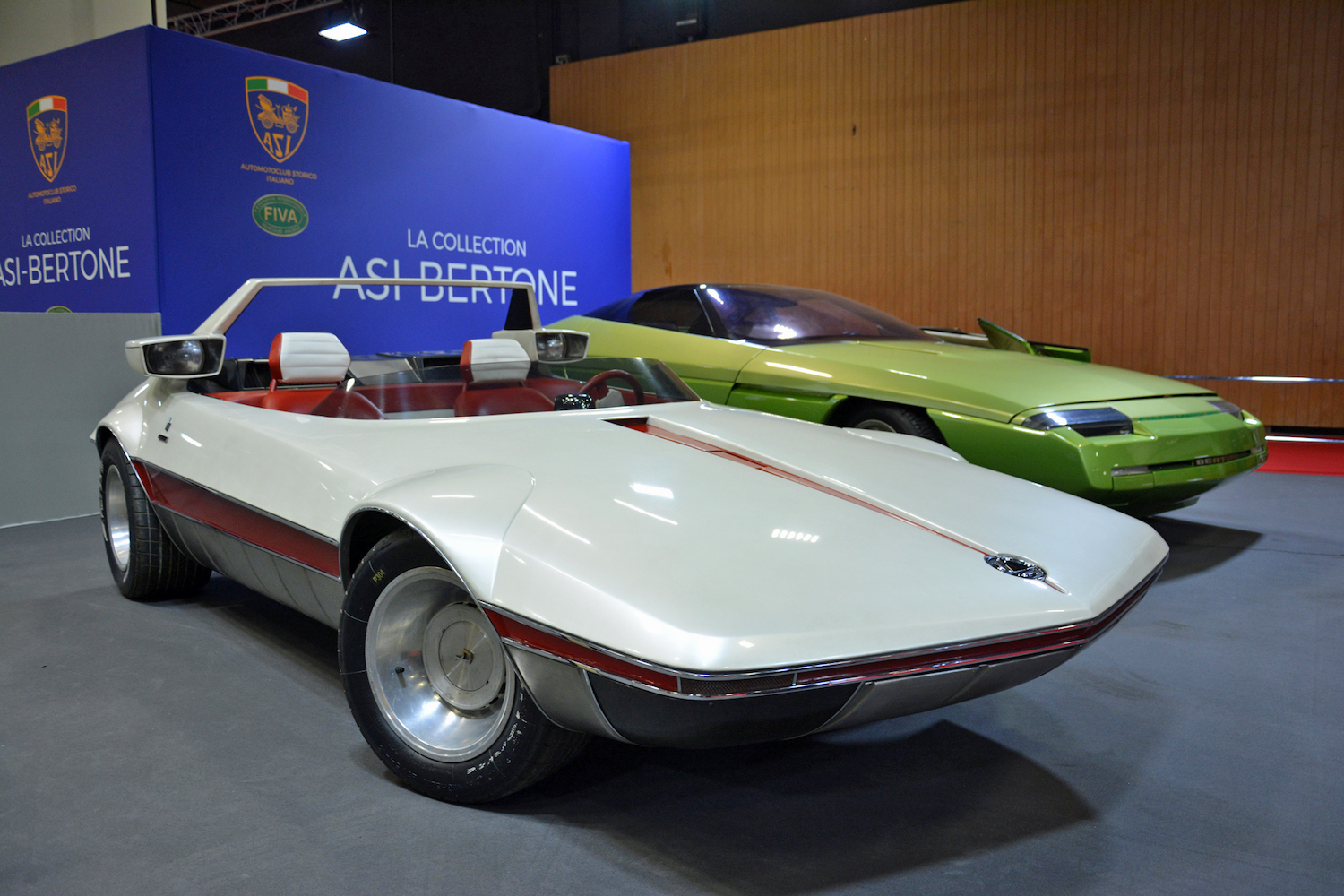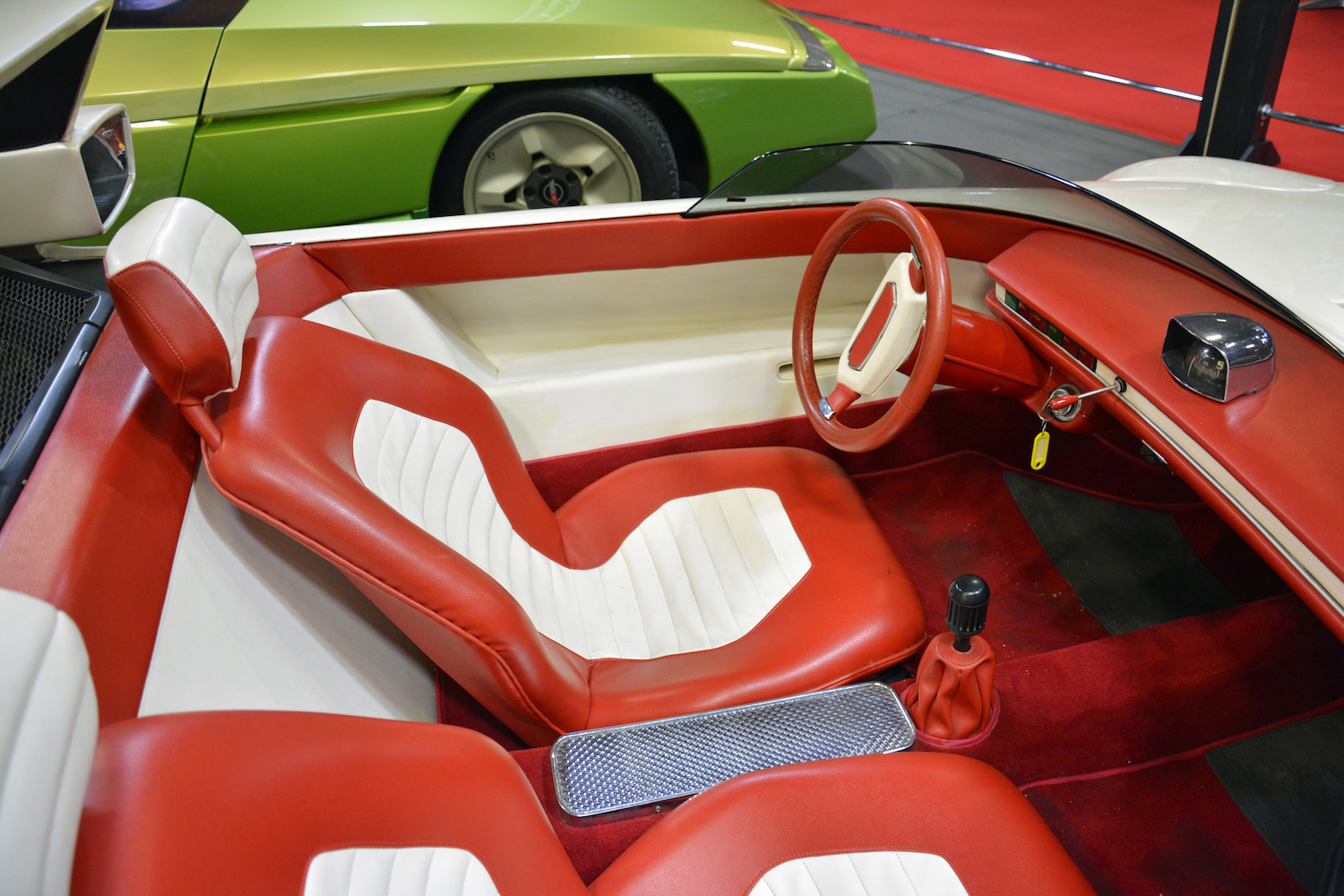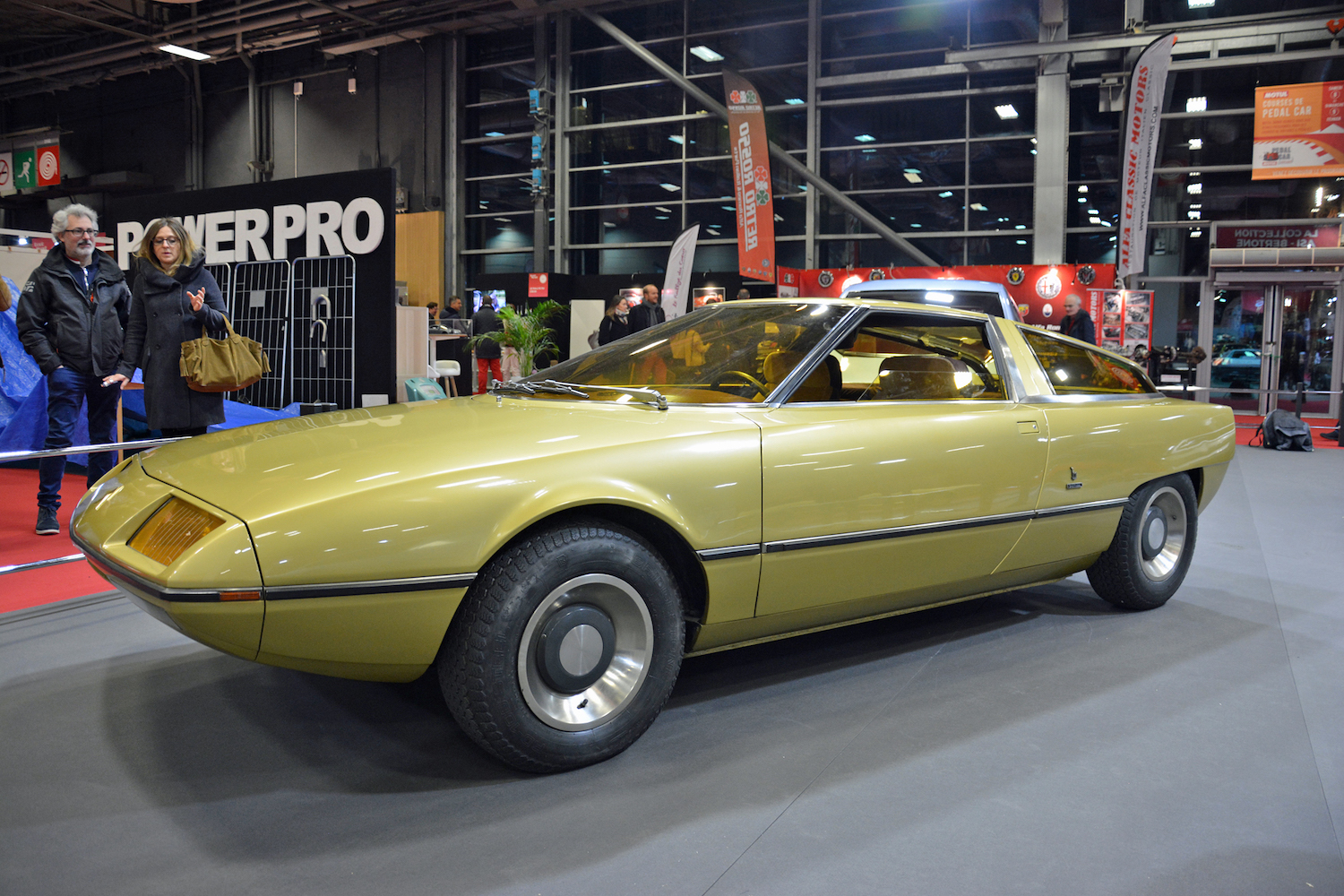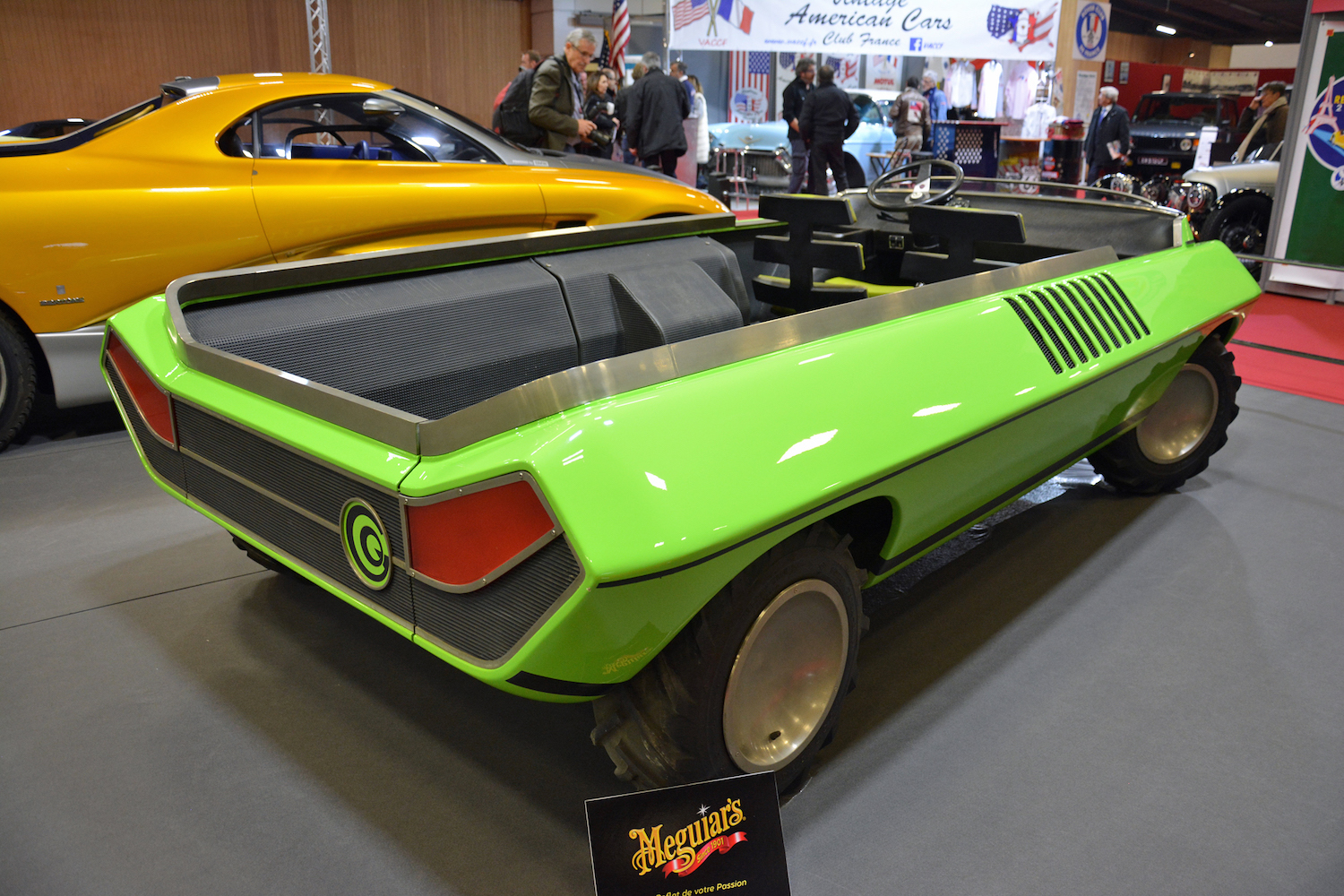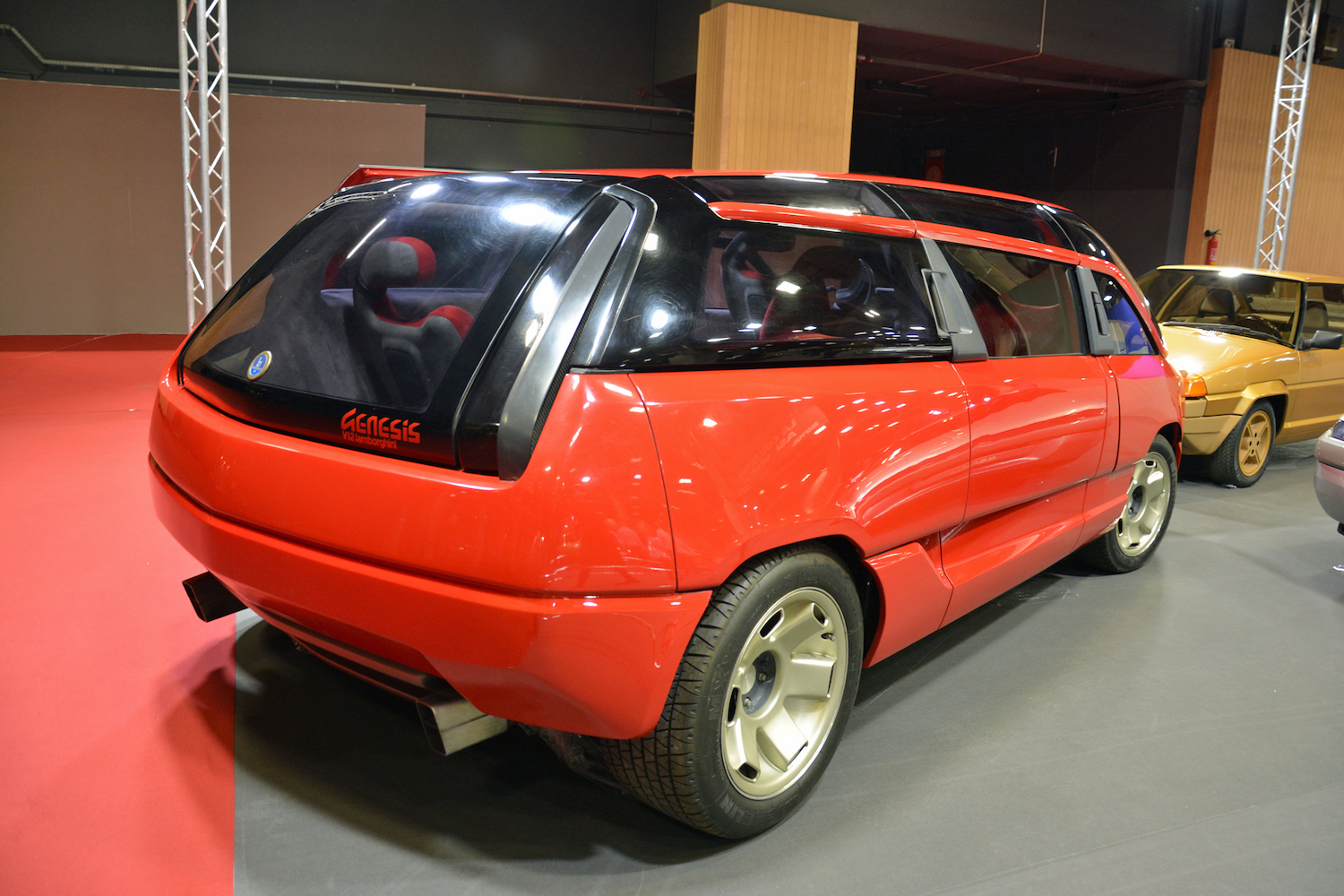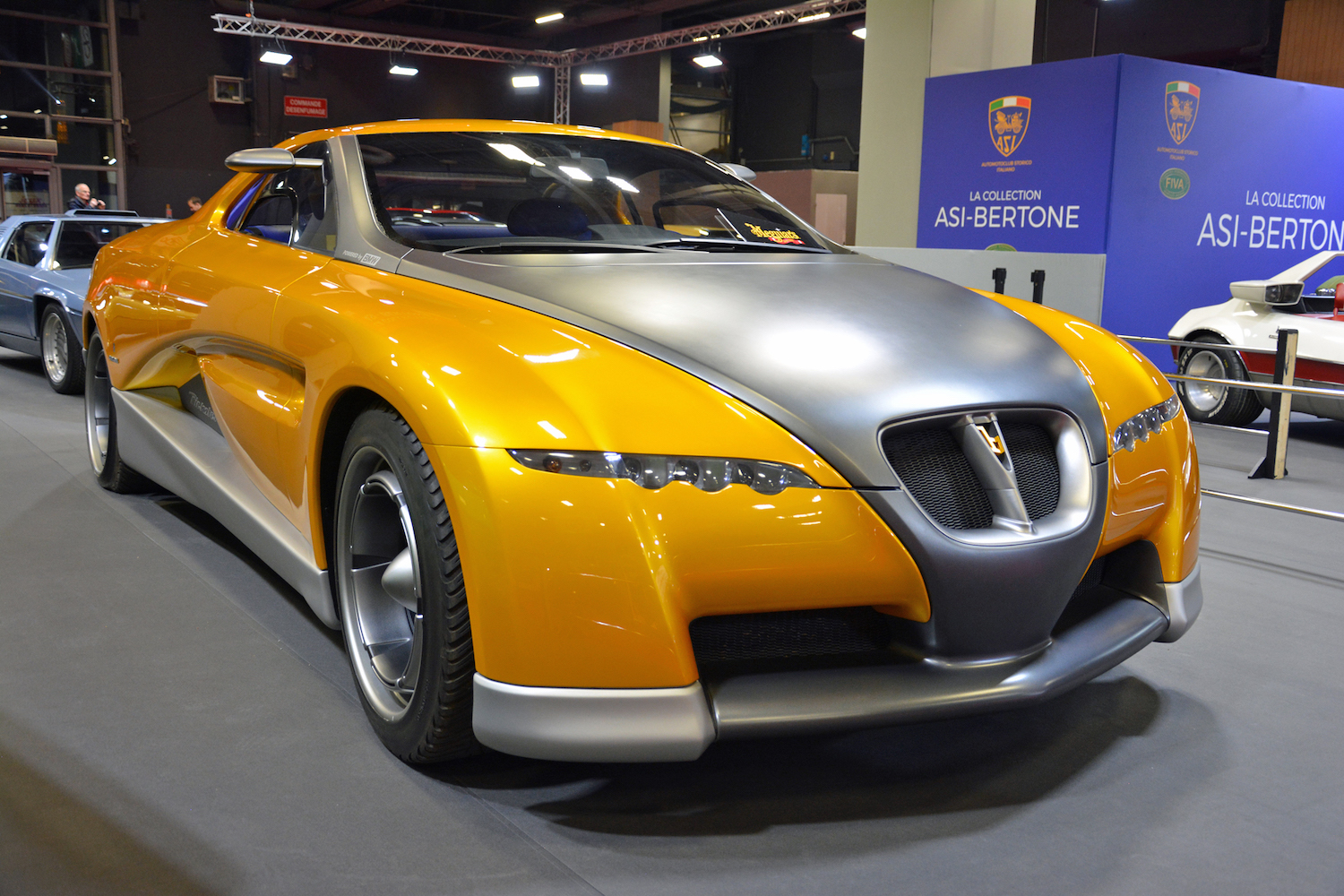Media | Articles
9 of Bertone’s most bizarre concept cars
Is there anything with which Bertone hasn’t dared to experiment?
The storied design house is arguably best known for styling Italian cars, including several hugely desirable Alfa Romeo models, but in its heyday it dared to dabble in everything ranging from a boat-like, motorcycle-powered Suzuki off-roader (that actually floats) to a Lamborghini-powered minivan.
Bertone reluctantly sold its trove of historic concepts after it filed for bankruptcy in 2015. Automotoclub Storico Italiano (ASI) purchased a lot of 79 cars after promising the Italian government to keep them in Italy and under the same roof. While they’re normally housed in a museum located next to the Milan airport, ASI received permission to ship some of the most fascinating models in its collection to Paris for Rétromobile 2020.
Autobianchi Runabout (1969)
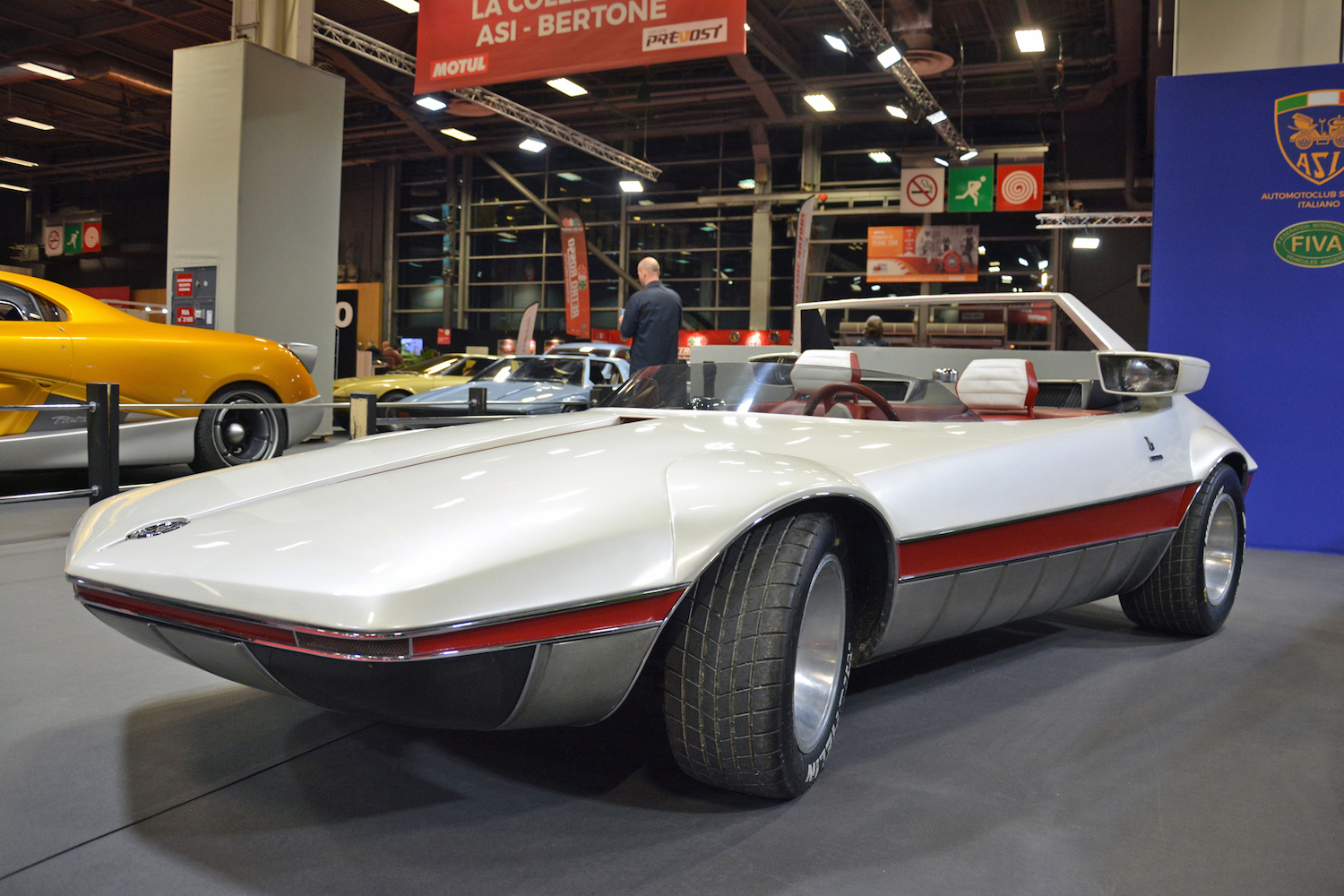
The Marcello Gandini-designed Autobianchi Runabout created an unlikely bridge between power boats and city cars. It was loosely based on the A112, the Fiat-owned firm’s long-lived answer to the original Mini, but it took the form of a mid-engined two-seater roadster that wouldn’t have looked out of place in an episode of Speed Racer. The short, wraparound windshield and the hemisphere-shaped speedometer mounted in the middle of the dashboard added a nautical flair to the concept, while headlights installed behind the front occupants, on the same level as the headrests, were just plain cool.
Marketplace
Buy and sell classics with confidence
Abarth hadn’t gotten its hands on the A112 yet, and the 850-sourced 903-cc four-cylinder engine was deemed far too anemic to power such a wild-looking concept, so Bertone plucked a 1.1-liter four from the 128 parts bin and mounted it right behind the seats. It spun the rear wheels via a four-speed manual transmission. The head-turning Runabout made a big splash (pun intended) at the 1969 Turin Auto Show, so Bertone somewhat unexpectedly began the process of turning it into a production model.
Autobianchi didn’t want it, the A112 was never offered as a roadster, but Fiat knew it would need to replace the 850 Spider (which was also designed by Bertone) sooner or later and company boss Gianni Agnelli was hooked on the idea of releasing a toned-down version of the Runabout. The project was called X1/9 internally, and it retained this designation when it reached showrooms in late 1972.
Citroën GS Camargue (1972)
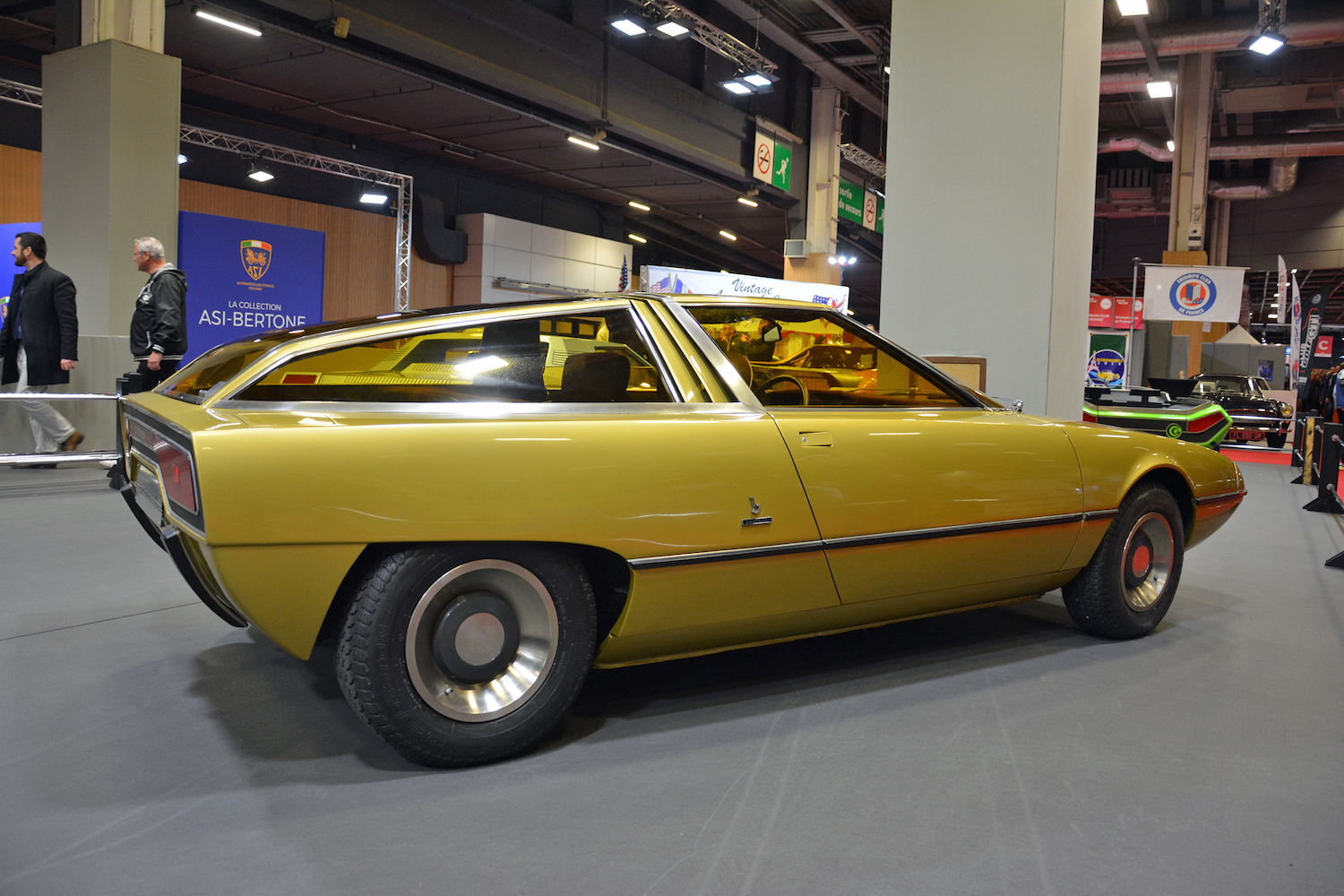
Inimitable Gallic quirkiness distinguished the Citroën range in the early 1970s, but the company’s lineup suffered from a severe lack of sexiness. Bertone hoped to change that when it unveiled the low-slung, wedge-shaped GS Camargue concept to the popping of flashbulbs at the 1972 Geneva International Motor Show.
The coupe looked almost ready for production, it wasn’t as wild as some of Bertone’s earlier (or later) concept cars, and nothing about its exterior design revealed it was based on the humble GS released in 1970. It would have looked like an alluring UFO in a Citroën showroom. Oddly, the most unusual parts of the interior were standard-issue GS components, like the rotating drum-style speedometer, the single-spoke steering wheel, and the funky, horizontal parking brake lever that dove deep into the dashboard.
It wasn’t as quick as it looked because power came from the same 55-horsepower, 1.0-liter flat-four engine found in the GS. However, the shared underpinnings suggest the concept could have easily received the 107-horsepower twin-rotor Wankel engine that Citroën put in less than 1000 units of the ill-fated GS Birotor starting in 1973. I doubt the Camargue was ever a serious candidate for production, though.
Citroën was in bad shape during the early 1970s. It had wasted a fortune on the aforementioned Wankel engine via a joint venture with NSU named Comotor, gotten side-tracked by working on other projects like a helicopter, and taken far too long to fill the gap between the 2CV and its numerous derivatives and the bigger models like the DS and SM. Fiat was extremely interested in purchasing Citroën from Michelin at the time, so finding a new home for the loss-making brand was exponentially more important than teaming up with Bertone to bring a low-volume coupe to the market.
And yet, the GS Camargue was mass-produced—sort of. French toy manufacturer Majorette offered a 1/55-scale version of the coupe in several colors between 1974–1981.
Suzuki Go (1972)

Boats again influenced members of Bertone’s styling team when it started designing the Suzuki Go. Envisioned as a four-wheeled, go-anywhere Zodiac boat, it was unusual because it wasn’t based on an existing car. Instead, it was created from scratch and powered by a three-cylinder, 750-cc Suzuki motorcycle engine mounted behind the driver’s seat. The instrument cluster sheds light on its two-wheeler roots.
Nothing stopped the Go. While it was happy to remain on the pavement, it tackled snowy trails with ease thanks to a set of aggressively-tracked tires, and users could take it on a lake by strapping an outboard motor to the back end. Alternatively, the tailgate doubled as a ramp on which to load a motorcycle or a snowmobile. It’s astonishing to think such a simple car could perform so many tasks.
Bertone unveiled the Go at the 1972 edition of the Brussels Motor Show. It remained a one-off; it likely could have been made street-legal with minor changes, but Suzuki had no interest in it.
Ferrari 308GT Rainbow (1976)
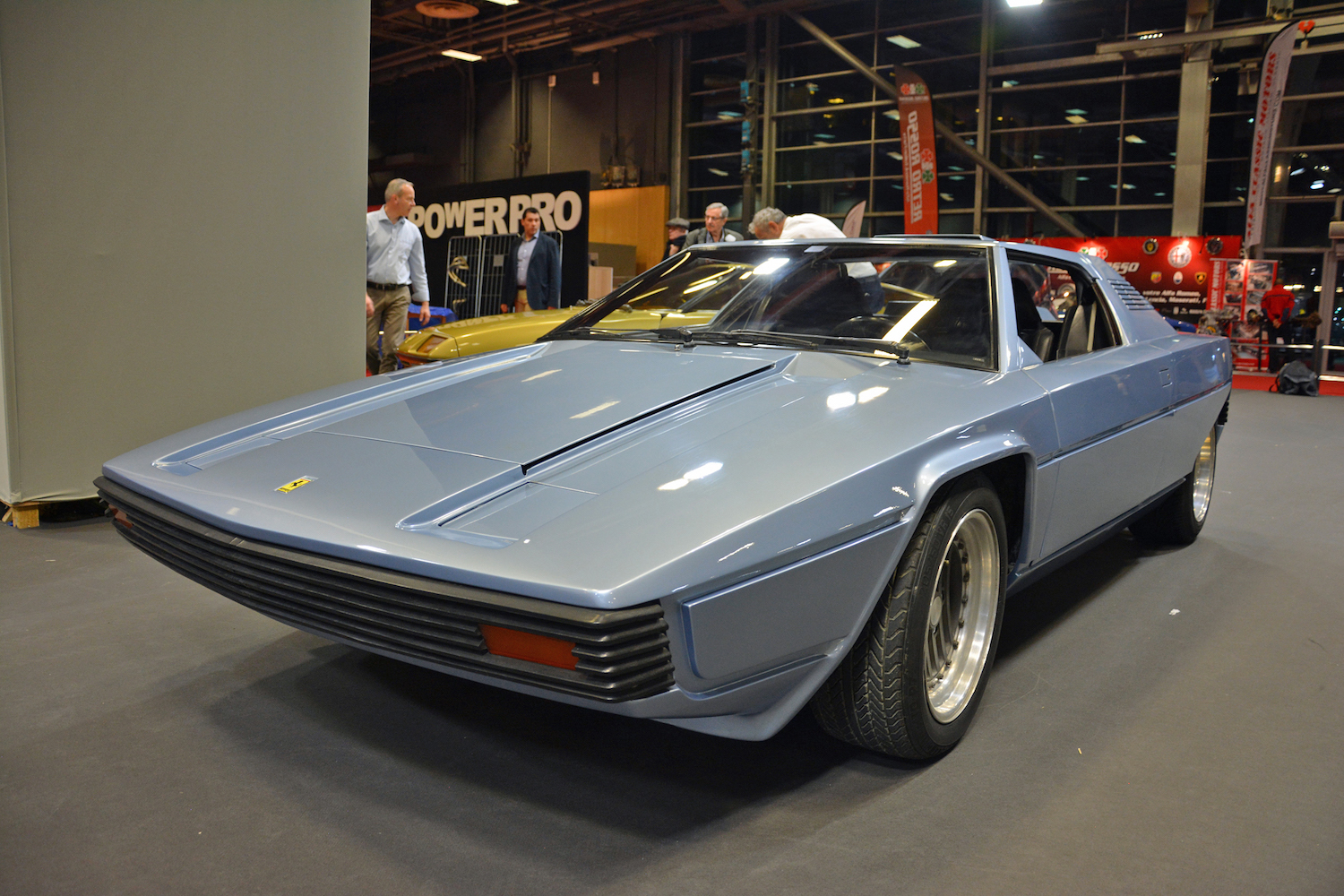
Bertone was likely shocked to receive a call from Ferrari asking for a mid-engine coupe; Pininfarina had historically been the company’s preferred and privileged design house. The catch was that Bertone’s Marcello Gandini needed to stay close to Ferrari’s design language as he drew the Dino 308 GT4 unveiled at the 1973 Paris Motor Show.
The 308GT Rainbow concept, introduced three years later, showed how Gandini imagined a sports car with a Prancing Horse emblem on its nose when he didn’t have to follow Ferrari’s strict guidelines or worry about making the car feasible for regular production. It was considerably lower and sharper than the 308 GT4 and instantly recognizable as a Bertone design.
The 308GT Rainbow’s most innovative feature was its roof. The one-piece panel rotated up by 90 degrees and neatly slid into a compartment wedged right between the mid-mounted, 3.0-liter V8 and the passenger compartment. Ferrari didn’t want the car or its roof, but it’s difficult not to draw a parallel between Bertone’s 1976 concept and the 458 Spider introduced in 2011 with a power-folding roof.
Volvo Tundra (1979)
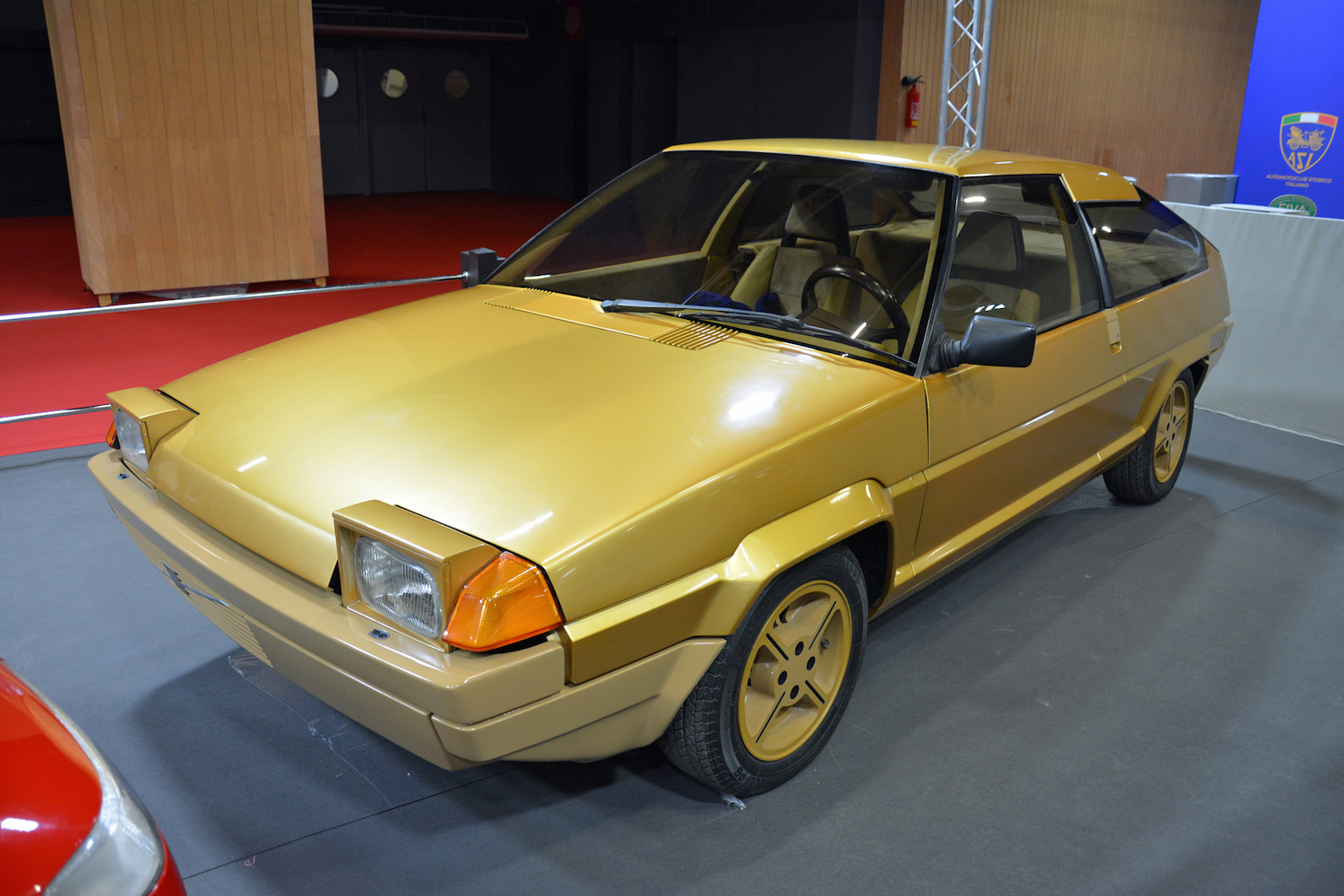
In the late 1970s, Volvo asked Bertone to help it shed its solid-but-staid image. The partnership spawned the 262C, which was a stylish and luxurious evolution of the 260, but executives thought they could take it a step further by asking the design house to create a car from scratch. Marcello Gandini alchemized the rather awkwardly-shaped 343 into a concept named Tundra that broke all ties with the ode to boxiness that Volvo called its design language. Only emblems revealed the hatchback’s Swedish roots.
Some of Volvo’s decision-makers loved the Tundra, and they already imagined how it could influence an entirely new generation of models during the 1980s; but the company ultimately ruled it too flashy. Instead, Volvo asked its design department to give the entire 300 range an unadventurous mid-cycle facelift.
Meanwhile, Citroën had asked Bertone to draw a replacement for the GSA, an aging mid-range model getting pelted in a highly competitive segment, and the Tundra was exactly the kind of forward-thinking car it had in mind. Volvo’s rejected hatchback heavily influenced the BX released in 1982.
Chevrolet Ramarro (1984)
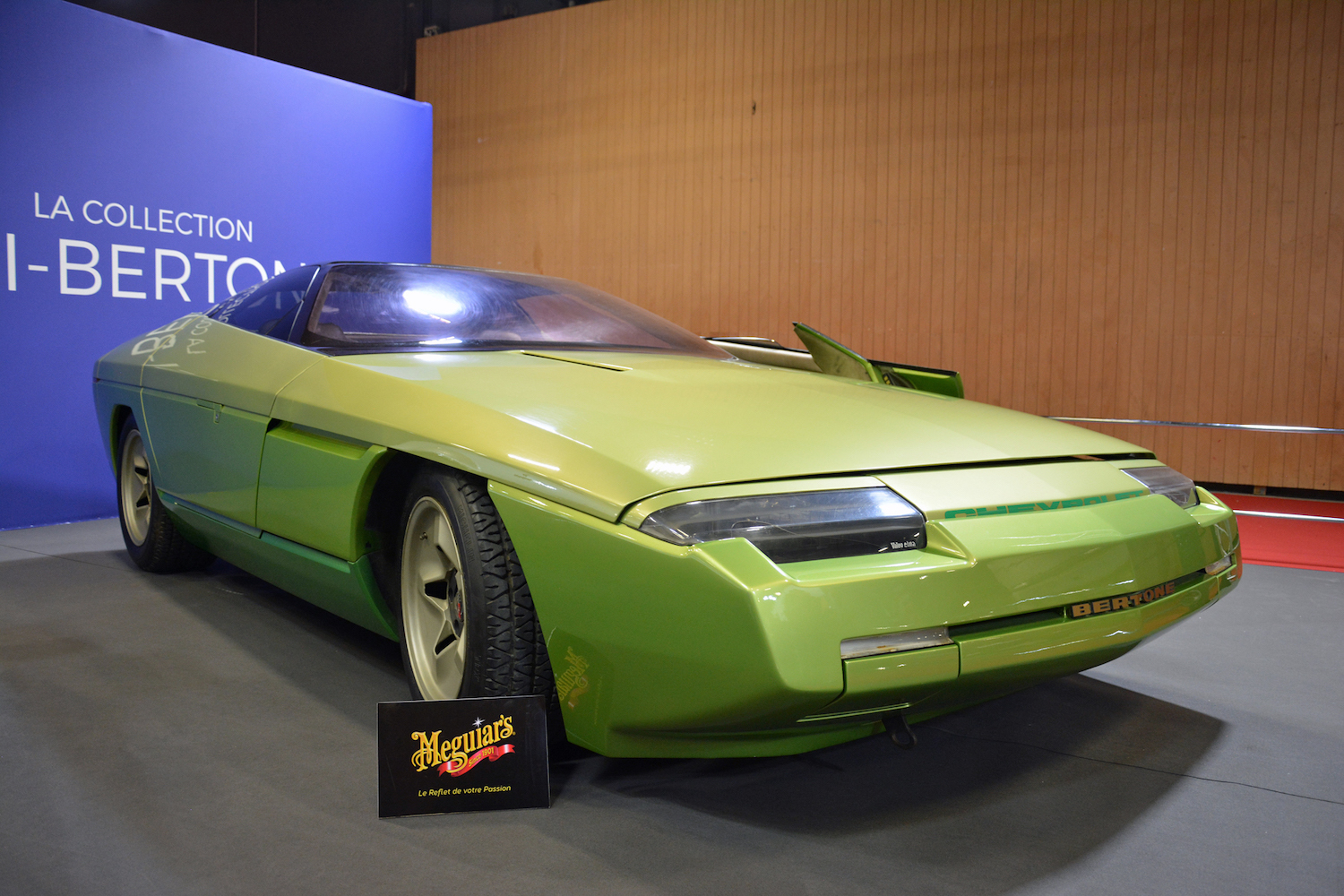
Bertone stepped outside of its comfort zone when it transformed a fourth-generation Chevrolet Corvette into the Ramarro. Though Bertone turned the Corvair into a voluptuous coupe in 1963, the company wasn’t known for using Chevrolet models as a blank slate and had never modified a Corvette. The end result put a more exotic, European-flavored spin on one of America’s most-loved sports cars.
Stylists reinvented the Corvette’s proportions by reducing the size of the overhangs and making the front end lower, a modification which required moving the radiator to the back of the car. The V-8 engine remained untouched. Sliding the front doors forward revealed a completely restyled interior that hinted at the meaning behind the name: ramarro is the Italian word for a type of green lizard.
Catching and skinning lizards would have been too labor-intensive, so Bertone settled for a type of green leather that resembled reptile skin. The Corvette’s individual seats were replaced by a wide bench and a tall, rectangular center console housed all of the switchgear. This represented a stunning display of foresight—it’s a solution nearly every automaker adopted during the 2010s.
Bertone introduced the Ramarro at the 1984 Los Angeles Auto Show, about a year after the fourth-generation Corvette began arriving in showrooms. It was never a candidate for production.
Citroën Zabrus (1986)

The sleek, understated GS Camargue didn’t convince Citroën to add a mid-range coupe to its line-up. Bertone gave the idea another shot in 1986 when it unveiled the Zabrus concept at the Turin Auto Show. The proposal was worthwhile: Citroën and Bertone enjoyed a burgeoning relationship at the time, and the Paris-based carmaker stood on much more stable financial footing in the middle of the 1980s than in the early 1970s.
The Zabrus took the form of a two-door shooting brake (an unusual body style for Citroën) with thin headlights connected by a horizontal crease that wrapped around the entire body. Scissor doors and pivoting seats gave the front passengers easy access to the cabin, where they sat in front of a digital instrument cluster that took up almost all of the space beneath the windshield. The electric Honda E released on the European market offers a similar layout, though screens replace individual gauges.
Bertone made the Zabrus even quicker than it appeared by using rally-proven mechanical components sourced from the BX 4TC. Power came from a turbocharged 2.2-liter four-cylinder engine that channeled 200 horsepower to all four wheels via a five-speed manual transmission.
However, Citroën again turned down the project; it didn’t need a coupe. Some of the styling cues inaugurated by the Zabrus resurfaced on the Bertone-designed XM introduced in 1989, and they trickled down to the smaller Xantia—the design house’s last series-produced Citroën—released in 1992.
Lamborghini Genesis (1988)

Lamborghini released an off-roader, the LM 002, well before its rivals planted their flags in the segment and, by doing so, proved its image was more elastic than Ferrari’s. Could it be stretched wide enough to reach the minivan segment dominated by Chrysler in America and Renault in France? Bertone defiantly argued “yes!” when it unveiled the Genesis at the 1988 Turin Auto Show—and what a van it was.
Large glass surfaces and McLaren-like butterfly front doors characterized its cab-forward design. Conventional rear sliding doors opened to reveal a cavernous cabin with two front-facing seats and a single rear-facing chair right in the middle. The front occupants could face backwards by moving their seat cushions, which was a clever alternative to the pivoting seats found in some vans during that era.
So, what makes this a Lamborghini? Fire it up, and you’ll know immediately. Bertone dared power the Genesis with a 455-horsepower, 5.2-liter V-12 engine normally found in the Countach Quattrovalvole. It shifted via a three-speed automatic transmission provided by Chrysler, which owned Lamborghini at the time, so it likely couldn’t match (let alone beat) the Countach’s 4.8-second sprint from 0–62 mph.
For better or worse, there’s no indication Lamborghini considered adding the Genesis to its portfolio.
BMW Pickster (1998)

Bertone reveled in its ability to create the unexpected by rummaging through a company’s parts bin. Introduced at the 1998 Geneva Motor Show, the Pickster concept looked like a futuristic alternative to the car-based utes that ruled Australian roads, yet everything under the body came from BMW.
Its prototype-building team started by taking an E39-generation 528 sedan and dropping a 3.2-liter straight-six from the M3 into the engine bay. Designers topped the running gear with a muscular pickup body characterized by vents, scoops, scallops, and a spoiler that today looks like it belongs on a record-breaking Koenigsegg. An intriguing, almost Pontiac-like interpretation of BMW’s twin-kidney grille, Subaru SVX-esque side windows, and bullet-shaped wheels added a finishing touch to the look.
BMW had zero interest in bringing the ultimate hauling machine to the market so the Pickster remained a one-off concept. Crossovers and SUVs make up a significant chunk of its sales in 2020 but it continues to steer clear of the pickup segment, though it turned the mammoth X7 into a one-off truck in 2019.
If you had to pick one, which of these wild concepts would you put into production? Let us know in the comments section below.
